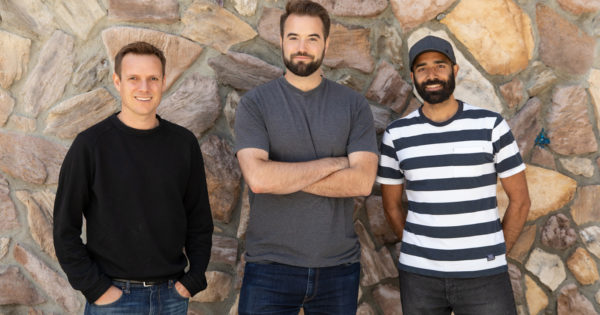
Last year, Substack’s only employees were its three co-founders: Hamish McKenzie, Chris Best and Jairaj Sethi. Now, the San Francisco-based startup has a bigger team—it’s up to 18 employees—and even bigger ambitions: trying to do nothing less than reinvigorate the flagging media industry.
To do so, the trio—Adweek’s Publishing Executives of the Year—have built their entire business around what until only recently was an afterthought to many media organizations: newsletter subscriptions.
McKenzie, a former journalist, says for a long time the media business has been in a “defensive crouch” trying to “stave off death,” but Substack and the idea of directly paying writers via subscriptions to newsletters is turning the industry around. “I think a reinvention is starting to happen, and Substack is part of that. We’re seeing that this model works,” he says.
Substack writers create newsletter content that gets emailed to subscribers, and the offering has gotten increasingly popular since it was founded in 2017. The platform has lured big-name journalists like Casey Newton, Andrew Sullivan and Edith Zimmerman away from their traditional newsroom jobs. Two years ago, Substack had over 11,000 paid subscribers; now, that number is up to 250,000, says McKenzie. (The company says it works with thousands of writers but does not give specific figures, nor does it reveal what percentage of those writers have newsletters with paid subscriptions and which are free.)
The top 10 writers on Substack collectively bring in more than $7 million per year, and the platform takes a 10% cut of those subscriber fees, McKenzie says. And the company is remaining “100% percent focused” on subscriptions, he says, with no plans of running ads to open up an additional revenue stream.
“We think there’s so much opportunity to explore and innovate around subscriptions and direct payment,” says McKenzie. “The world hasn’t even seen a small portion of the potential of what’s possible with an ecosystem where the readers pay writers directly.”
McKenzie became friends with Best when he joined Kik Interactive, a now-defunct messaging app Best co-founded and served as CTO. By 2017, the two were thinking of what would come next. They shared a passion about the future of the media industry, so they recruited fellow Kik alum Sethi to start Substack. McKenzie leads operations, Sethi heads technology and Best operates as CEO.
The media industry, which until now has largely relied on advertising revenue to stay afloat, has had a brutal 2020 as Covid-19 ripped through newsrooms, shut down live events and squeezed ad spend. But newsletters have struck a chord with both media companies and readers, as people stay home surrounded by digital devices with their email constantly at their fingertips.
For now, media companies still have some big advantages over Substack, including offering benefits like healthcare, access to editors and legal support. But Substack’s founders say those are all on the platform’s road map. Currently, the company is building out a Substack Defender program to protect writers in a pilot effort that is limited to U.S.-based writers with paying subscribers. Next on the agenda is building a healthcare offering and system to connect writers with editors, which Substack will initially conduct as a trial with a “small number of publishers with whom it makes quite obvious business sense,” McKenzie says.
“What we’ve started doing is experimenting with packages for high-potential writers that can give them enough support that they feel confident to strike out on their own. And that can mean quitting their high-profile media job in some cases to go start building their writing business on Substack,” he says.
"Media" - Google News
October 26, 2020 at 07:05AM
https://ift.tt/3kHtHUV
Media Newsletters Are Booming, and Substack’s Co-Founders Lit the Fuse - Adweek
"Media" - Google News
https://ift.tt/2ybSA8a
https://ift.tt/2WhuDnP
Bagikan Berita Ini














0 Response to "Media Newsletters Are Booming, and Substack’s Co-Founders Lit the Fuse - Adweek"
Post a Comment